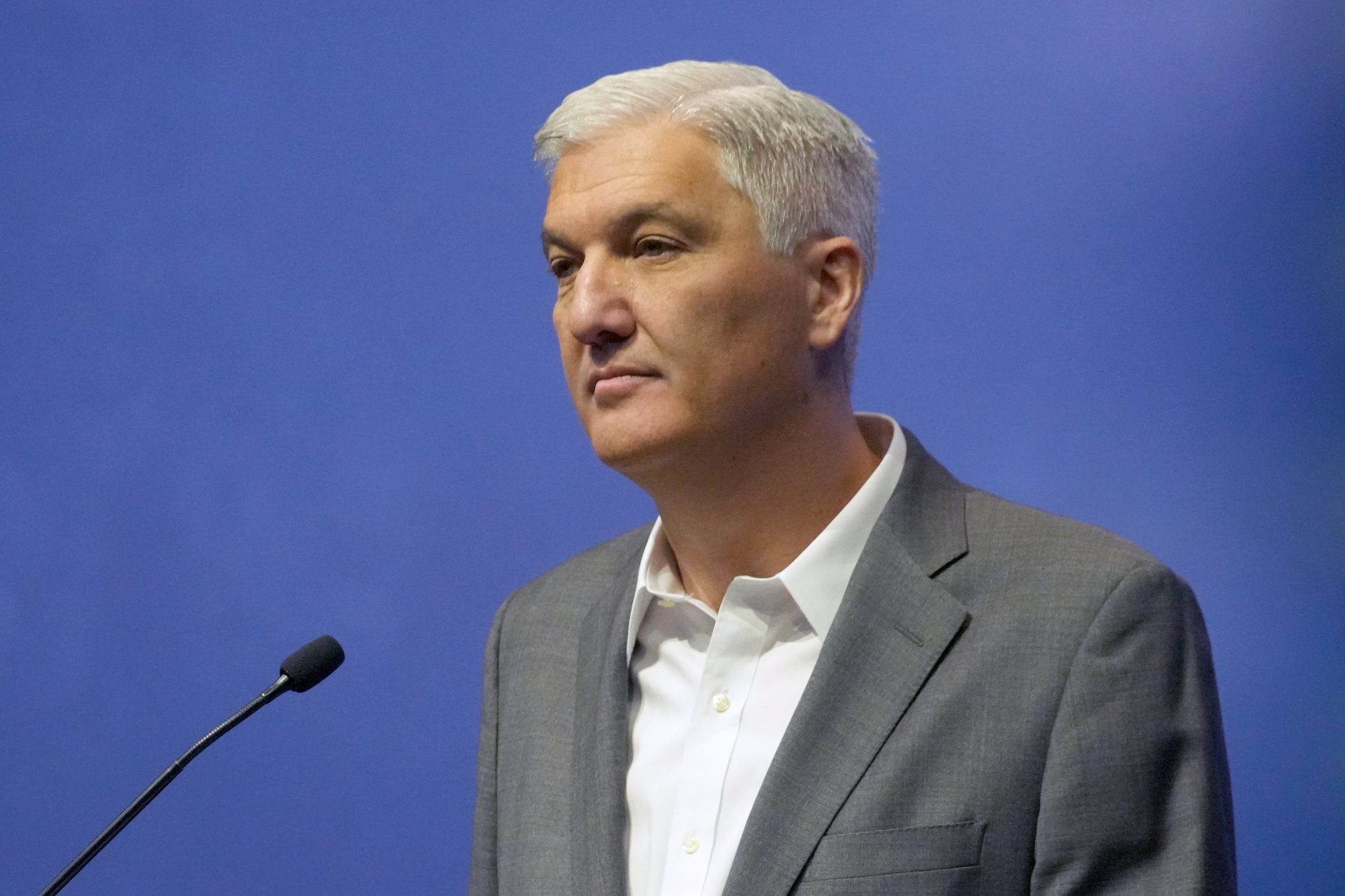Almost exactly a year after the College Football Playoff announced it had finally agreed to expand to 12 teams in 2024, FBS commissioners will reconsider that format altogether on Wednesday in Dallas.
As always, George Kliavkoff will be in attendance to represent the Pac-12, Front Office Sports confirmed.
But the most immediate problem is the role of Kliavkoff himself in the CFP Board of Managers — the board that oversees the CFP’s granular details. Until the Pac-12 leftovers secure future homes, and Kliavkoff’s status as an FBS commissioner is decided, those conversations will be little more than game theory.
“I think it is wise for us to take a step back and reconsider what the [playoff] format might look like, given these changed circumstances,” SEC Commissioner Greg Sankey previously said on “The Paul Finebaum Show.”
“Right now, we still have 10 FBS conferences, but there are obviously questions on whether or not that will remain. And yeah, that could create a thought in my mind and in others’ of some level of adjustment being made.”
Those decisions will be made by the CFP Board of Managers, compriThe sed of the 10 FBS commissioners and Notre Dame athletic director Jack Swarbrick.
While a committee of FBS university presidents ultimately votes on major issues like budgets and the CFP format, it’s up to the commissioners to hammer out the CFP’s more granular details.
But it’s hard to imagine Kliavkoff could — or should — get a vote in any CFP dealings. He’s not only heading up a near-defunct conference, but also has been shunned from leading conversations about the Pac-12 leftovers. (After meeting with Mountain West officials, one Washington State administrator reportedly said they wished their commissioner was Gloria Nevarez.)
Without Kliavkoff, the board would have 10 voting members — making it potentially inoperable without an 11th, and potentially tie-breaking, vote. The board itself would likely have to either add or subtract from its remaining nine.
Once Kliavkoff’s fate is decided, the board will turn to other pressing matters: who gets into the playoff, and how much they get paid.
Reports have suggested the conversation will continue around a 12-team format (though Sankey has said that he wouldn’t mind an eight-team playoff.)
The CFP previously decided to have a six-and-six format: one bid for each of the top-six-ranked conference champions, and one bid for the remaining top six overall. That structure assumes each Power 5 champion would get a spot, as well as at least one Group of Five school.
Without the Pac-12, commissioners could be in favor of a five-and-seven structure instead, according to multiple reports. One Group of Five school would still get a guaranteed spot alongside champions from the “Power 4.”(Sankey would be fine with 12 at-large bids.)
The commissioners would have to reexamine the revenue distribution — already a subject of debate before the Pac-12 disintegrated. After all, it wouldn’t be a debate about the structure of college football without a conversation about money.
The current structure awards a much more favorable amount to Power 5 conferences because they have deals with New Year’s Six bowls. Group of 5 conferences get the leftovers.
In 2023, each Power 5 conference received $79.4 million, according to the CFP. Group of 5 conferences received a total of $103 million — split five ways, that’s only about $20 million per conference. The money is then funneled down to schools.
Conferences had two main gripes with this structure. Group of 5 conferences wanted more distribution, and Power 5 conferences with incoming members wanted to make sure shares weren’t diluted from splitting CFP revenue more ways.
Now, these issues will become even trickier. Will there still be a weighted distribution for the “Power 4?” What will the split look like now that multiple conferences will have 14 members or more? If a Group of 5 conference like the Mountain West can assert itself as the “new Pac-12,” will it be considered a Power conference?
Nevarez called it a “chicken and egg” situation in a previous interview with FOS. Though the Power 5 designation comes from the CFP’s revenue distribution and voting structure.

















